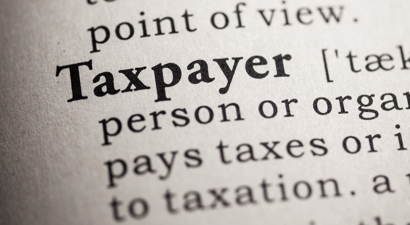Productive Asset Allowance - Revenue or Capital in Nature
The issue which arises in the Appeal case of Volkswagen South Africa (Pty) Ltd / The Commissioner for the South African Revenue Service (1123/2016 ZASCA 190) is whether the accrual of rebates calculated with reference to capital expenditure, and to which the Appellant became entitled under a government scheme to support the local motor industry, should be regarded as accruals of a revenue or capital nature.
During 1995, the South African government initiated a Motor Industry Development Programme (MIDP) aimed at an internationally competitive and growing automotive industry. Owing to the success of the development programme, the government extended the MIDP with one of its objectives being the rationalisation of models being produced in the automotive industry. Rationalisation of models, however, would require plant upgrades and technology enhancements to put the country’s manufacturers on a par with the world’s best. This would involve substantial capital expenditure inter alia to provide dedicated buildings to expand production lines, to install robots used in the production and assembly processes and to upgrade machinery and tooling.
As an incentive for the automotive manufacturers to embark on such an expensive capital programme, the Board on Tariffs and Trade, recommended the introduction of a Productive Asset Allowance (“PAA”) to those manufacturers that had invested in dedicated productive assets for the assembly of light vehicles and manufacture of automotive components.
In order for a PAA certificate to be issued, any claim for such benefits had to audited by external financial auditors using prescribed audit standards in order to verify the investments in productive assets. The value of the PAA certificate would be 20% of the capital investment so audited and verified.
These PAA certificates could then be used by the manufacturer to offset the duty which it became liable to pay on importing fully made up vehicles for sale in South Africa. As a result of their participation in the PAA scheme and the rationalisation of the motor vehicles they were producing, the manufacturers were reimbursed an amount of 20% of the capital expenditure incurred in the rationalisation process by, effectively, paying less import duty than would have been the case had they not participated in the scheme.
The Appellant duly applied in the prescribed manner supported by the necessary business plan to participate in the PAA scheme. It had invested heavily in qualifying assets in three different capital projects, namely, the Golf A4 Project, the Polo Project and the Golf A5 Project. These investments ultimately led to it receiving PAA certificates which were audited as required and approved.
In its income tax returns for the year of assessment 2008-2010, the Appellant reflected the PAA certificates that it had received as being accruals of a capital nature. The amounts involved were substantial. The Commissioner refused to accept that these amounts were of a capital nature, and assessed the Appellant for tax on the basis that they were income.
The Appellant’s objection to such assessment was overruled, which led to an appeal in the tax court whose judgment was then subject to an appeal in the Supreme Court of Appeal (“SCA”).
The Appeal Judges considered the seminal cases dealing with the test to be applied to determine what is capital or revenue and, although they agreed that there is no “litmus test’ for such decision, they concurred that one should not be led to a result in one’s classification of a receipt as income or capital which is contrary to sound commercial and good sense.
The court then looked at para 3.2.3 of the South African Revenue Services Interpretation Note 59 of 10 December 2010, which states that:
“…a government grant will be of a revenue nature in the hands of a person carrying on trading operations if it is a trading receipt [however] any amounts received or accrued for purpose of:
- Establishing an income-earning structure, or
- As compensation for the surrender of such a structure,
is of a capital nature.”
It is clear from this interpretation note that the revenue authority regards the purpose of a government grant of cardinal importance.
The judgment also refers to the learned authors of Silk who expressed the view that:
“…subsidies or similar payments made by the government in terms of an Act of Parliament to local merchants or producers for the production or export of certain commodities are, it is submitted, on income account if they are paid to supplement trading receipts derived from the sale of such commodities…If a subsidy takes the form of a contribution towards the producers cost of production of a certain commodity, it is submitted that it is of an income nature. On the other hand, if the subsidy is paid as a contribution towards the costs of fixed capital assets, it is submitted that it partakes of the nature of capital and is not taxable”.
In each case the court needs to look at the real and basic cause of the accrual to determine whether it was capital or revenue in nature. There are effectively two questions: First, what was the real and basic cause of the accrual (or put somewhat differently, why or in respect of what conduct or activity was the grant made) and, secondly, whether that cause is, as a matter of fact, more closely associated with the equipment of the tax payers income producing machinery (in which event it should be regarded as capital) or with its income earning operations (in which event it should be regarded as revenue).
The court held that it was clear that the PAA certificates were in fact issued in order to compensate manufacturers for at least a portion of the capital outlay occurred in respect of the plant and machinery required for rationalisation.
In disallowing the Appellant’s objection to the PAA certificates not having been regarded as capital accruals, SARS stated that there was no indication from the PAA guidelines that the amount was received for the purpose of establishing an income-earning structure. It went on to state that in calculating the PAA certificates, the Department of Trade of Industry took into account the amount invested in qualifying plant machinery, however, this was done for the purpose of calculating the allowance which did not imply that the Appellant had been compensated “for the capital outlay in respect of the plant and machinery”.
Furthermore, the court a quo held that as the PAA certificates could only be redeemed by payment of customs duties, the diminished payment of customs duty was clearly related to the gross income of the Appellant so that the PAA certificates were not of a capital nature.
Judge Leach, for the SCA, found it astounding that SARS were not prepared to acknowledge that PAA certificates were in fact issued in order to compensate manufacturers for at least a portion of the capital outlay incurred in respect of the plant and machinery required for rationalisation. The whole rationale behind the PAA certificates was to encourage manufacturers to go along with the rationalisation.
As the certificates were issued to compensate a manufacturer for a percentage of its capital expenditure, they were clearly capital in nature and the fact that they might lapse cannot change that position. The making of a capital investment was at the centre of the scheme and, without a manufacturer making such an investment, a PAA certificate could not be paid.
Accordingly, the court held that the Respondent’s contention that the PAA scheme was not directly intended to support capital expenditure but merely to allow the Appellant to reduce the cost to it of imported vehicles and thereby increases revenue, is groundless. The court held that PAA certificates were in no way received as part of a scheme of profit making. They reimbursed the Appellant in respect of a percentage of its capital expenditure.





